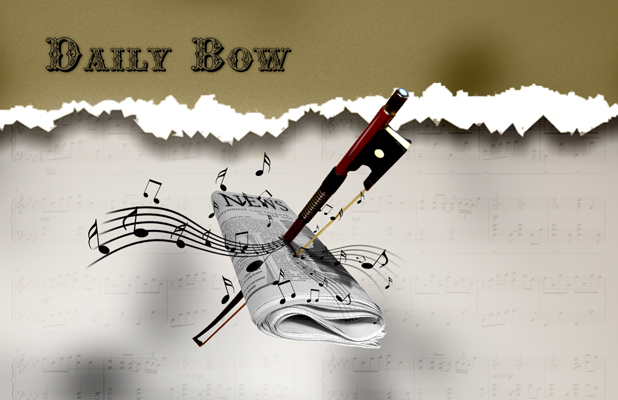Radiologists and Violin Makers Come Together to Recreate the Legacy of Stradivarius with CT Scans!
 An incredible use of computed tomography imaging and advanced manufacturing techniques, under the direction of expert radioloigsts and luthiers (string instrument makers), has resulted in the reproduction of a 1704 Stradivarius violin.
An incredible use of computed tomography imaging and advanced manufacturing techniques, under the direction of expert radioloigsts and luthiers (string instrument makers), has resulted in the reproduction of a 1704 Stradivarius violin.
Of all of the instruments created by Antonio Stradivarius, widely considered the greatest violin maker, only a fraction have survived to the modern world. His violins are famous for their unique sound produced by the combination of methods, materials, and personal touch. That combination, and construction of the instruments that followed, have long been a subject of fascination and investigation.
Who knows how many countless violin-makers spent sleepless nights attempting to reproduce the legendary Stradivarius sound in their own instruments. Perhaps they were aiming at a fantasy. But now, thanks to modern innovation, we have what may be the closest reconstruction of the Stradivarius violin possible.
Dr. Steven Sirr, a radiologist at FirstLight Medical Systems, explains:
CT scanning offers a unique method of noninvasively imaging a historical object. Combined with computer-aided machinery, it also offers us the opportunity to create a reproduction with a high degree of accuracy.” – “We have two goals: to understand how the violin works and to make reproductions of the world’s most prized violins available for young musicians who can’t afford an original.
Dr. Sirr worked with two professional luthiers, John Waddle and Steve Rossow, who together have spent years scanning over 100 violins. Of those, 29 were valuable instruments from before 1827. With a 64-detector CT, over 1,000 CT images were converted into stereolithographic files, which can be read by a computer-controlled router called a CNC machine. Rossow custom-made this CNC machine for the project, which was used to carve the back and front plates and scroll of the violin from various woods. Afterwards, Waddle and Rossow worked their magic, completing the design before assembling and varnishing the replica by hand.
Stradivarius in the World Today… and the Makings of the Legacy
Of the Stradivarius and other prized violins still in existence, many are housed in museums and are never played. Others are sold for millions of dollars to top professional musicians. The Betts Stradivarius is held in the U.S. Library of Congress.
Dr. Sirr, an amateur violinist, first scanned a violin with CT out of curiosity. He said:
I assumed the instrument was merely a wooden shell surrounding air,” he said. “I was totally wrong. There was a lot of anatomy inside the violin.
After he shared those first CT images with Waddle in 1989, the two spent years scanning more than 100 violins—including 29 valuable instruments pre-dating 1827—and other stringed instruments to better understand their composition. Sirr said
Just like human beings, there is a wide range of normal variation among violins. When you are looking at an instrument that is hundreds of years old, you will see worm holes and cracks that have been repaired, as well as damage from being exposed to all kinds of conditions, from floods to wars.
For owners of authentic Stradivarius or other prized violins, CT imaging not only provides a definitive form of identification, it helps establish a pedigree that may increase the value of their investment.
Three-dimensional images of the valuable violin and details on how the replica was made were presented on November 28 at the annual meeting of the Radiological Society of North America (RSNA)
This remarkable feat is a fascinating example of how the modern era can empower classical music. Not all change needs to happen at the expense of traditions of classical music. On the contrary, in this case technology and passion have come together to bring something beautiful from a long-past era into the reality of today.














No comments yet.